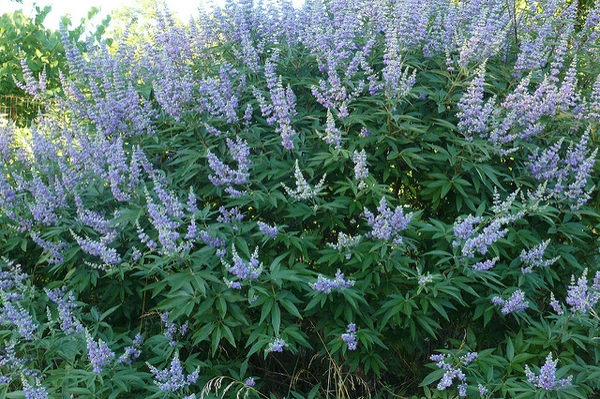Plant Profile – Chaste Tree
go.ncsu.edu/readext?1083721
en Español / em Português
El inglés es el idioma de control de esta página. En la medida en que haya algún conflicto entre la traducción al inglés y la traducción, el inglés prevalece.
Al hacer clic en el enlace de traducción se activa un servicio de traducción gratuito para convertir la página al español. Al igual que con cualquier traducción por Internet, la conversión no es sensible al contexto y puede que no traduzca el texto en su significado original. NC State Extension no garantiza la exactitud del texto traducido. Por favor, tenga en cuenta que algunas aplicaciones y/o servicios pueden no funcionar como se espera cuando se traducen.
Português
Inglês é o idioma de controle desta página. Na medida que haja algum conflito entre o texto original em Inglês e a tradução, o Inglês prevalece.
Ao clicar no link de tradução, um serviço gratuito de tradução será ativado para converter a página para o Português. Como em qualquer tradução pela internet, a conversão não é sensivel ao contexto e pode não ocorrer a tradução para o significado orginal. O serviço de Extensão da Carolina do Norte (NC State Extension) não garante a exatidão do texto traduzido. Por favor, observe que algumas funções ou serviços podem não funcionar como esperado após a tradução.
English
English is the controlling language of this page. To the extent there is any conflict between the English text and the translation, English controls.
Clicking on the translation link activates a free translation service to convert the page to Spanish. As with any Internet translation, the conversion is not context-sensitive and may not translate the text to its original meaning. NC State Extension does not guarantee the accuracy of the translated text. Please note that some applications and/or services may not function as expected when translated.
Collapse ▲
Photo credit NC Plant Toolbox
During a walk at the Flat Rock Park I spotted one of my favorite small flowering trees. The tree is Vitex agnus-castus. My favorite cultivar is ‘Shoal Creek’. This selection of the old-time chaste tree, a gardening favorite in the south since 1983, was selected from a seed row at Goodness Grows garden center which was located in Lexington, GA, just outside of Athens, GA. I first recall having seen this wonderful tree at that famous nursery while working there during my undergraduate days. Sadly the garden center is closed and both of the founders have passed.
Vitex is a small flowering tree that rarely exceeds 15-20 feet tall. Most gardeners and nurseries train the chastetree into a multiple trunk tree and when the trunk is limbed up 4-6 feet a wonderfully spreading branching habit is exposed. The bark is silvery gray and adds winter interest to the landscape during dormancy. Suckers (advantageous limbs) form readily on the trunk and branches so the plant must be pruned often to keep the desired form.
The chastetree prefers full sun to partial shade and is tolerant of most soils. It is tough, heat and drought tolerant, cold hardy and relatively pest free. These attributes make the chastetree a Southern gardener’s favorite.
‘Shoal Creek’, a purple flowering cultivar, offers spectacular color when in full bloom. Flower spikes begin forming in May and June and resemble the flowers of the butterfly bush (Buddleia spp.). Varieties other than ‘Shoal Creek’ can be blue, lavender, pink or white although purple is the most common.
The 12-18 inch long flowers attract pollinators such as bees and other insects such as butterflies making it a wonderful butterfly garden plant from late June to September. Spent blooms from the early summer can be removed to encourage late summer flowering.
The leaves, which are finger-like in appearance, are dark green above and silver beneath giving the Vitex a soft appearance. The wind blowing the leaves gives the impression that the plant is changing color before your eyes.
Vitex is an excellent tree overall and has many uses in the garden and landscape. It makes an attractive and effective driveway border when spaced 20 – 30 feet apart. In the cottage garden it fills in corners nicely and allows for planting shade plants such as hostas and the like beneath it. Combine it with crape myrtles to create expressive and impressive color combinations.
You may purchase one at local retailers in containers or as a balled and burlap tree if you prefer a larger specimen. Vitex is also easily propagated from cuttings. Whether it is used as a specimen tree or an accent plant, the ‘Shoal Creek’ chaste tree offers endless beauty in the summer landscape.




